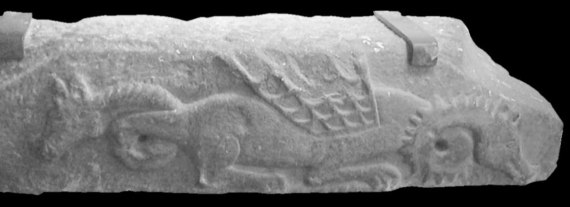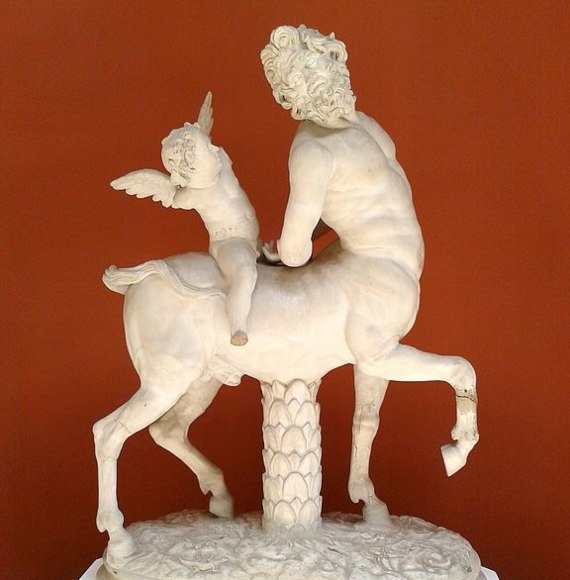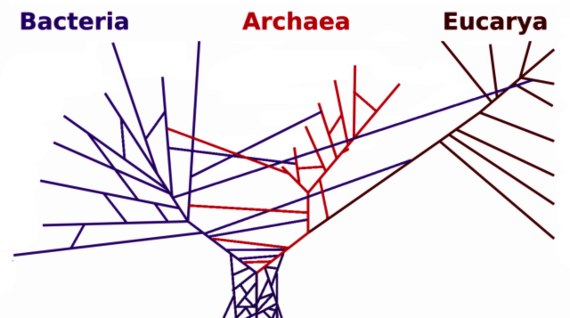Jorge Luis Borges (Buenos Aires, 24th August 1899- Geneva, 14th June 1986) looms large among the 20th-century writers who most influenced the world of science. Given his penchant for science, various critics have pointed out how physical and mathematical concepts like time, space, and the infinite permeate his body of work. Conversely, Borges’ ideas on biology — nature and the classification of animals — have received less critical attention.
Borges’ animals
Borges once declared during an interview that the biological science that most interested him was zoology, the science dedicated to studying animals. In fact, animals appear throughout his work: tigers are most prevalent, but jaguars, horses, lions, wolves, and other beasts also make an appearance.

His interest in mythology, however, drove him to “recreate” other animals that were, for the most part, fantastic expressions of the imagination. In characteristically scholarly fashion, he compiled those “strange creatures that man’s fantasy has engendered throughout time and space” in The Book of Imaginary Beings (1967), published in collaboration with the mysterious (and fictitious) Margarita Guerrero. The work had previously been published in 1957 as the Manual of Fantastic Zoology, but with fewer imaginary beasts.
There are two categories of strange animals that predominate the work. Those that really exist but to whom mythology or simple wives tales attribute extraordinary powers: panthers, pelicans, salamanders, to name a few. Then there are those that are positively fantastic. This group includes, alongside relatively familiar creatures like centaurs, dragons, and unicorns, lesser known creatures, which might have an excessive number of legs, wings, or heads. Prominent in this group, the amphisbaena — from the Greek meaning “both ways” — is a two-headed serpent, that can move either forwards or backwards thanks to the second head that sits at the end of its tail.

In his descriptions of these imaginary and strange beasts, Borges often points out that they could be based on ostensible cases of actual animals with unusual characteristics. He indicates that the case of the mythical amphisbaena could be based on actual observations in the Antilles or in some regions in the Americas where there are reptiles popularly known as “two-way walkers” because they can move both forward and backward. There are also supposedly “two-headed snakes” because they apparently have head-like structures in their tails.
On other occasions, Borges adopts a biologist’s scientific approach and collates the arguments against the existence of such fantastic animals. With respect to the centaur (an animal with a man’s head and a horse’s body), he cites the argument Lucretius sets forth in his De Rerum Natura (On the Nature of Things): “when three years have come round, the horse is in the prime of vigor, but the child by no means so; for often even now in his sleep he will clutch for the milky paps of his mother’s breasts. Afterwards, when the stout strength and limbs of horses fail through old age and droop, as life flees from them, then at last youth sets in in the prime of boyish years.” And to address the amphisbaena, Borges summarizes the argument put forth by Sir Thomas Browne in the 17th century: “He observed that there does not exist an animal that does not have a top and bottom, a front and back, a left and right, and he denied the existence of the amphisbaena, where both ends of the creature are the front.”

Nonetheless, the modern reality is that these mythical snakes have provided their name, amphisbaena, to a whole group of very interesting, but little-known reptiles, the amphisbaenians. It has not been confirmed that they have two heads, but they are able to move forwards and backwards. By comparison, the branch of biology that studies the development of animals agrees that there can be “anomalous” animals with additional legs, antennae, eyes, wings, and even two-headed creatures, where the heads both look forward. But it is difficult, if not impossible, for an animal like the mythical amphisbaena with two heads at opposite sides of the body to exist naturally, not to mention the wildly fantastic centaurs, although we are now seeing just how far new biological techniques like genetic engineering and CRISPR can go.
And their classification
One of the main functions of zoology is to classify animals. When tackling the problem of classifying his creatures, Borges’ first course of action was to accept the canon established in the binomial naming system with its nested categories: species, genus, family, order, and so on, which has prevailed in zoology and biology since the time of Carl Linnaeus. But later, driven by an interest in the overarching problems of any complex classification system, he proposed an alternative, completely unorthodox animal classification system, which ultimately reveals the difficulty associated with attempts at large-scale classification.
He develops this topic in the essay “The Analytical Language of John Wilkins,” included in his work entitled Other Inquisitions, published in 1952. Attempts at finding a universal language dates back to, according to Borges, the 17th century with John Wilkins — and Descartes — and a certain Letelier (1850) is cited with trying to find an analytic language in which “a equates to an animal; ab, a mammal; abo, a carnivore; aboj, a feline; aboje, a cat …” It is clear that Borges, as well as Letelier, accepted the conventional system of classifying animals as the starting point.
But later, he also proposed a very peculiar animal classification system. He attributed it to a certain unknown, apocryphal Chinese encyclopedia, entitled Celestial Emporium of Benevolent Knowledge. It divides animals into: “(a) those that belong to the Emperor, (b) embalmed ones, (c) those that are trained, (d) suckling pigs, (e) mermaids, (f) fabulous ones, (g) stray dogs, (h) those that are included in the present classification, (i) those that tremble as if they are mad, (j) innumerable ones, (k) those drawn with a very fine camel hair brush, (l) others, (m) those that have just broken a flower vase, (n) those that look like flies from a long way off.”

Borges justifies this bizarre animal classification by asserting that any classification system of complex elements will to some degree be arbitrary. The classification of animals would be no exception. In fact, ever since Aristotle set out to try to scientifically classify living beings in general, and animals specifically, according to their similarities and differences, various issues have arisen. The most recent complication in our efforts to classify living beings — using DNA sequences based on the supposition that these sequences are not shared between different species — arose as soon as it was discovered that lateral (horizontal) gene transfer can exist between species, by means of a virus for example.
Comments on this publication